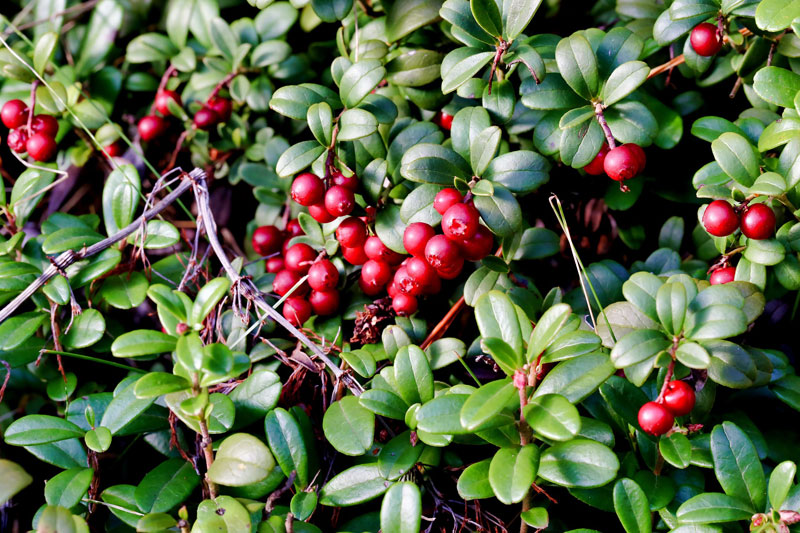Cranberry (Vaccinium macrocarpon Aiton)

The Canadian cranberry has been known as the “cranberry” for some years now. While in the USA the red berries of the evergreen heather plant are an indispensable ingredient for turkey at Thanksgiving, we know them dried as a baking ingredient or snack instead of sultanas. When raw, the berries are very tart and sour.
Originally native to North America, cranberry has only recently become familiar to us as a significant medicinal herb, while the North American Indians have always used the fruits to treat urinary tract infections. It has also been used to wash out inflamed wounds.
The cranberry, which from a pharmacological point of view should not be confused with the related European cranberry, contains a large proportion of proanthocyanidins, fruit acids, vitamin C, flavonoids and tannins. The ingredients prevent E. coli and other germs that cause urinary tract problems from attaching to the cells of the urinary tract organs, especially the bladder. As a result, the pathogens do not find a foothold and are flushed out with the urine. The berries also have an antimicrobial effect (against S. aureus, Salmonella enterica, among others), anti-inflammatory, cell-protective, vasodilator, weak blood pressure-lowering effect and strengthen the general defence.
The main field of application for cranberry preparations is the prophylaxis of recurrent urinary tract infections, but also the supportive treatment and follow-up treatment of infections with Helicobacter pylori, the causative agent of stomach ulcers.